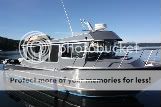cuttlefish
Well-Known Member
It looks like consumers will soon be paying more for Chilean farmed salmon. This makes a 10% premium for closed tank produced salmon look like a good deal.
New sanitary regulation will increase costs by 30%
http://www.fishfarmingxpert.com/index.php?page_id=76&article_id=85950
Chile: Implementation of the new sanitary requirements set up by the companies and the authority to surpass the sanitary crisis caused by the ISA virus will increase the costs for the Chilean salmon industry by 30% according to the SalmonChile's chairman César Barros.
Christian Pérez
Barros underlined that this cost will enable the industry to be "much more sustainable in the long term". Furthermore, he stated that thanks to the 54 sanitary measures implemented by the SalmonChile associate companies -30 of them will be enforced by the new regulation- the industry has been reducing the mortality rates caused by ISA virus and sea lice.
According to Diario Financiero within the new sanitary measures, the Chilean salmon industry will have to reduce the farming densities in order to avoid infection and spread of diseases. In addition, a production halt of three months in each site after harvest will be implemented.
Among others, the industry will also have to invest strongly in vaccination of every fish before entering the sea, adequate mortality handling and processing, and biosafe transportation between farms.
New sanitary regulation will increase costs by 30%
http://www.fishfarmingxpert.com/index.php?page_id=76&article_id=85950
Chile: Implementation of the new sanitary requirements set up by the companies and the authority to surpass the sanitary crisis caused by the ISA virus will increase the costs for the Chilean salmon industry by 30% according to the SalmonChile's chairman César Barros.
Christian Pérez
Barros underlined that this cost will enable the industry to be "much more sustainable in the long term". Furthermore, he stated that thanks to the 54 sanitary measures implemented by the SalmonChile associate companies -30 of them will be enforced by the new regulation- the industry has been reducing the mortality rates caused by ISA virus and sea lice.
According to Diario Financiero within the new sanitary measures, the Chilean salmon industry will have to reduce the farming densities in order to avoid infection and spread of diseases. In addition, a production halt of three months in each site after harvest will be implemented.
Among others, the industry will also have to invest strongly in vaccination of every fish before entering the sea, adequate mortality handling and processing, and biosafe transportation between farms.

